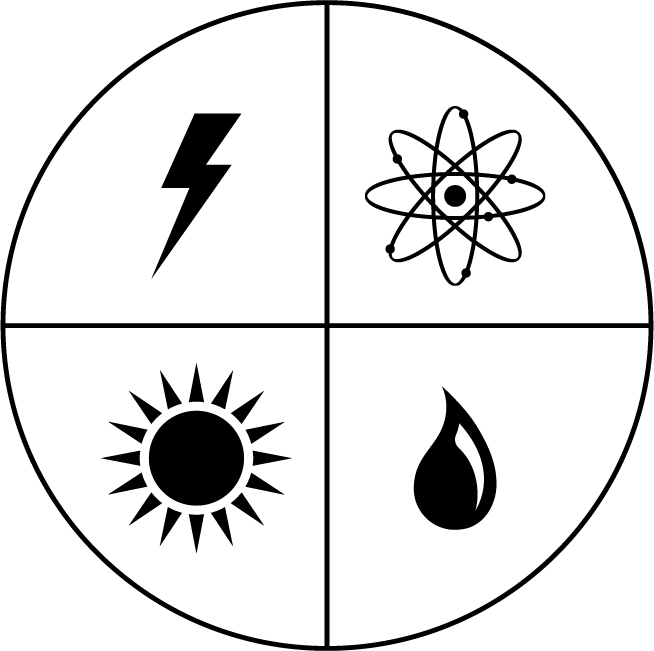The Public Interest Company is intended to combine all the positive aspects of these business models while discarding their drawbacks.
To maximize efficiency, a Public Interest Company is structured like a corporation, with an executive leadership and board, offering services for a profit. However, unlike a corporation that seeks to profit as greatly as possible, a Public Interest Company profits only as much as it needs to in order to invest money back into itself to expand and improve the quality of offered services, except in the issuance of dividends.
Like a bureaucracy, a Public Interest Company provides a public service for the public interest and is (initially) funded by public funds, but unlike a bureaucracy or public-private hybrid, a Public Interest Company isn’t owned by the government. Rather, it’s owned by the public, collectively, and remains directly accountable therein. Each U.S. citizen, upon reaching voting age, is given a single share of the company and is paid dividends from the company in the event of financial surpluses. As opposed to a corporation where the majority shareholder has the most sway, all shareholders have equal voice.
In this model, The Public Interest Company would be run by a board of directors that serve eight-year terms and are elected every Presidential election cycle by the public via simple majority, ranked-choice vote. These board members, in turn, would appoint a CEO of the company to manage it in the same capacity as a corporation today. The CEO would remain accountable to the elected board, which could also vote to issue bonds to raise money for future initiatives, or in the case of revenue surpluses due to international sales of Scarcity Zero’s systems (which are sold at greater profit margins abroad), issue dividends to shareholders. In this model, all votes and meeting minutes of The Public Interest Company are transparent by design and made public.
In operation, The Public Interest Company would be funded by congressional appropriation each fiscal year for 10 years (see page 305 for details) and would manage the implementation of Scarcity Zero’s primary resource production systems by soliciting bids from private companies through a process that is public and transparent by law.
Upon selecting a bid, The Public Interest Company pays a private enterprise to develop, deliver and implement the systems that provide the Scarcity Zero framework. It’s no different than how the government buys a fighter jet, except this expenditure now instead goes to systems of higher social value. And once the system was owned by the Public Interest Company, it would be implemented as determined by a nationwide implementation plan The Public Interest Company would publicly issue every year.
This process would work in one of three ways:
- In cases where The Public Interest Company purchases already existing technologies, the technology itself would become property of the PIC and the system developer would retain ownership of all relevant intellectual property and would have the right to sell additional models to whomever allowed by law.
- In cases where the PIC paid contractors to engineer new systems, the PIC would retain ownership of all intellectual property pertaining to the system, the agreement of which would be a prerequisite to awarding any contract.
- In cases where the PIC deems appropriate, it would have the authority to purchase intellectual property from private entities should the entity be willing to sell them.
- Companies who build technologies relating to Scarcity Zero as a primary business model would be subject to lower income tax burdens, as would their employees . Further, private investors in these companies could enjoy lower capital gains taxes than other private industries.
Depending on which case applies, The Public Interest Company would manage any delivered systems to provide energy and resources to society at low cost, quantified as no more than 2 cents per kilowatt-hour. In operation, The Public Interest Company would have four funding sources:
Congressional appropriation. In this model, this allocation is approximately $663 billion for 10 years. After that, The Public Interest Company would be self-funded through either direct energy sales or international sales of equipment.
Direct energy sales. The target price of electricity under Scarcity Zero is 2 cents/kilowatt-hour – 84% less than what it costs today. Assuming electricity consumption increases ~50% to 6.5 trillion kWh annually, this will generate an annual $130 billion to The Public Interest Company. This model does not include pricing models for hydrogen fuel, but expects it to sell at a comparatively lower rate.
Corporate bonds. To fund future initiatives, the Public Interest Company could issue bonds with a fixed rate of interest return on an open market, subject to shareholder vote. These bonds would be sold similarly to any corporate / treasury bond today, with the exception that capital gains taxes on profits would be lower for The Public Interest Company.
International sales. The Public Interest Company, through coordination with the State Department, would sell energy technologies to foreign governments at an increased profit, generating significant revenue.
With direct energy sales, corporate bonds and international technology sales, The Public Interest Company would ideally be operationally self-sustaining after the 10-year initial funding period. As its scale expands, it would first pay into a surplus fund to cover any future cost overruns. With this fund in place, it would continue to re-invest profits over time into energy-producing infrastructure, either to expand the scale of implementation or maintain systems that have already been deployed. Once profits reach a point where there are continual budget surpluses, these surpluses would be evenly divided and issued as dividends to all company shareholders (every American citizen of voting age until death).
